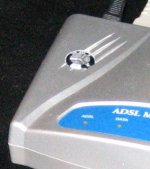Hey guys,
I was wandering if the physical size of caps makes a difference?
I just got some 10000uf Rubycom caps from ebay that are quite huge (8cm height x 3,5cm diameter). I've seen many similars caps much smaller (almost half the size).
So on your experience is it better or worse or makes no difference the size of the caps?
I was wandering if the physical size of caps makes a difference?
I just got some 10000uf Rubycom caps from ebay that are quite huge (8cm height x 3,5cm diameter). I've seen many similars caps much smaller (almost half the size).
So on your experience is it better or worse or makes no difference the size of the caps?
Of course capacitor size makes a difference. The parameters that determine capacitance and voltage rating are plate geometry and the dielectric properties of the material between the plates.
Capacitor construction is also important.
The best answer is: it would depend. Certain types of caps are better suited to some applications than others.
Capacitor construction is also important.
The best answer is: it would depend. Certain types of caps are better suited to some applications than others.
Of course capacitor size makes a difference. The parameters that determine capacitance and voltage rating are plate geometry and the dielectric properties of the material between the plates.
Obviously ;-).
No that's not what i meant, just noticed i didn't include all the info in the original post.
What may be better for audio chip amps?
For energy storage: electrolytic
For bypass/coupling: film, ceramic
Generally, physically smaller caps have less parasitics which isn't of terrible importance for class a, ab amps. I normally like to use caps with at least twice the voltage rating of what they'll see during operation. Of course board and budget constraints often don't allow that...
For bypass/coupling: film, ceramic
Generally, physically smaller caps have less parasitics which isn't of terrible importance for class a, ab amps. I normally like to use caps with at least twice the voltage rating of what they'll see during operation. Of course board and budget constraints often don't allow that...
There is also the issue of reliability and age. Older caps (>10, 15 yrs) are often larger than modern ones because of improvements in construction techniques. That doesn't mean that the cap is better or worse, just different.
Voltage rating and reliability also have an impact. Hi-rel milspec are generally larger than commercial versions with same VxC rating.
Jan Didden
Voltage rating and reliability also have an impact. Hi-rel milspec are generally larger than commercial versions with same VxC rating.
Jan Didden
My question is, in a given situation, does a physically larger cap run cooler? I'd expect yes, from a bigger body area to lose heat by convection. The higher voltage (and physically larger) caps in a series (such as Panasonic FC) also tend to have lower ESR specs, higher ripple current max. which may help when the smaller cap is borderline.
I opened my router/modem recently and found the smoothing cap, a 1000uF 16V 105C type, swollen and leaking slightly at the vent. (The brand, CTC, is also listed at badcaps).
I've swapped it for a physically slightly larger (and better brand) 1000uF 25V 105C, which runs quite hot - too hot to touch for more than a few secs, (70C?). But is it still a better swap than a decent 16V?
Case height can be a problem too...
I opened my router/modem recently and found the smoothing cap, a 1000uF 16V 105C type, swollen and leaking slightly at the vent. (The brand, CTC, is also listed at badcaps).
I've swapped it for a physically slightly larger (and better brand) 1000uF 25V 105C, which runs quite hot - too hot to touch for more than a few secs, (70C?). But is it still a better swap than a decent 16V?
BWRX: I normally like to use caps with at least twice the voltage rating of what they'll see during operation. Of course board and budget constraints often don't allow that...
Case height can be a problem too...
Attachments
Apart from the obvious relations that more capacitance and/or higher voltage will tend to require larger physical size, it is probably cooling issues that determine the size. The ripple current causes heating due to the ESR of the cap and this heat has to be disspiated from the can to the air. A big can could thus mean either that the cap has a high ESR, is designed for high ripple current and/or designed for long life. Of course, there may also be differences caused by manufacturers using different or newer technologies.
I poster some useful links in a similar thread yesterday:
http://www.diyaudio.com/forums/showthread.php?postid=961297#post961297
I poster some useful links in a similar thread yesterday:
http://www.diyaudio.com/forums/showthread.php?postid=961297#post961297
- Status
- This old topic is closed. If you want to reopen this topic, contact a moderator using the "Report Post" button.
- Home
- Amplifiers
- Power Supplies
- Capacitor Physical size
